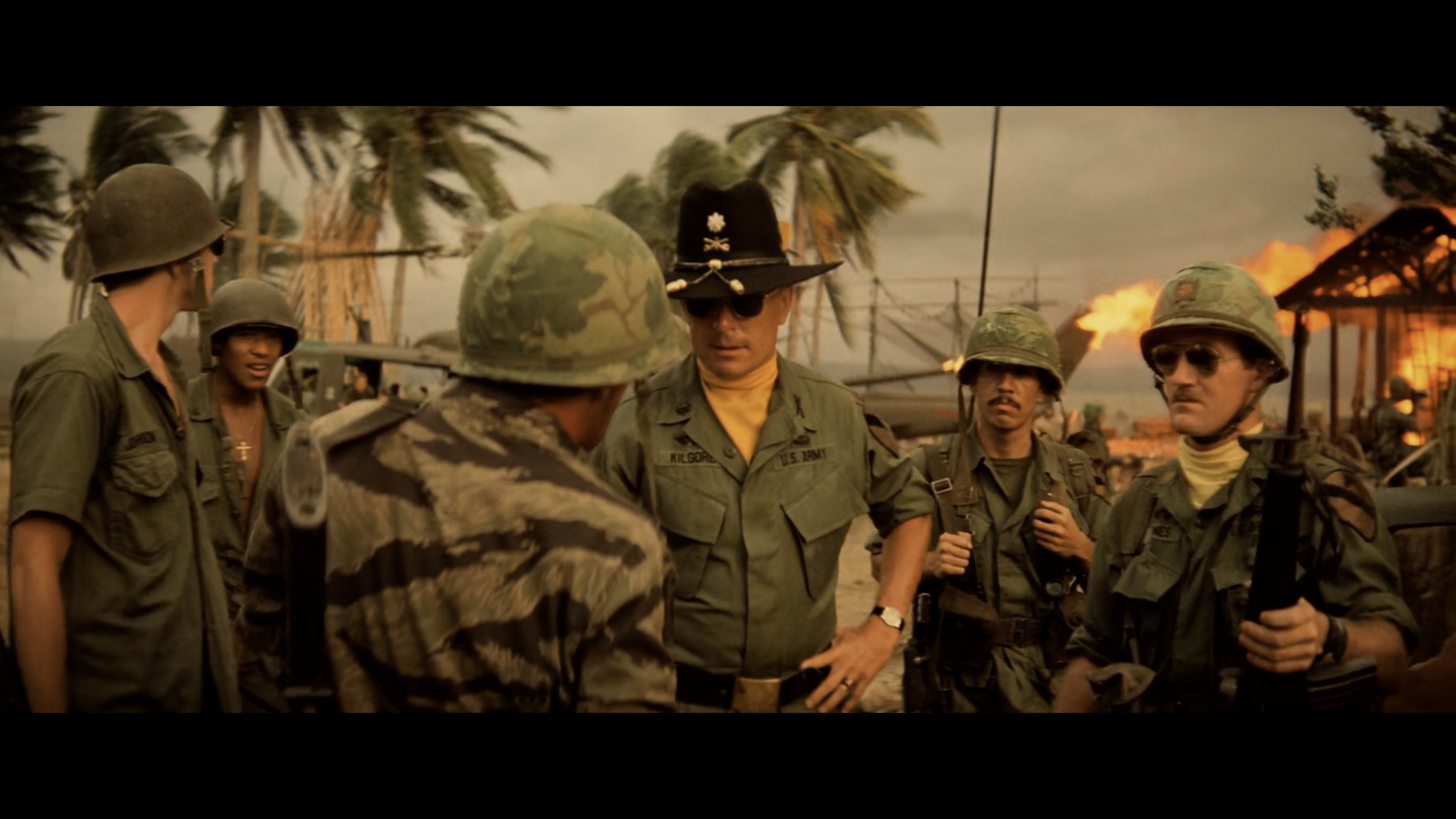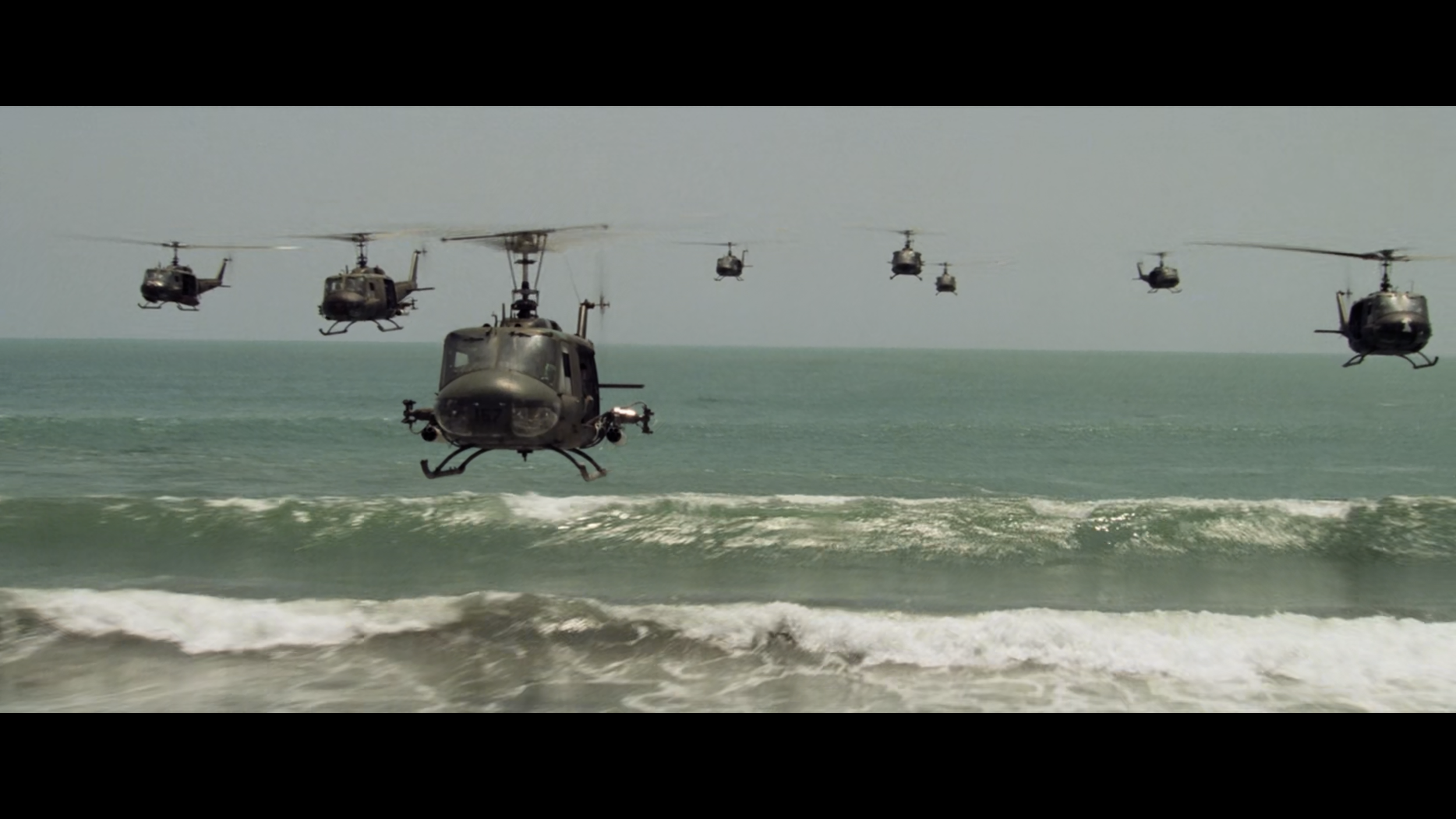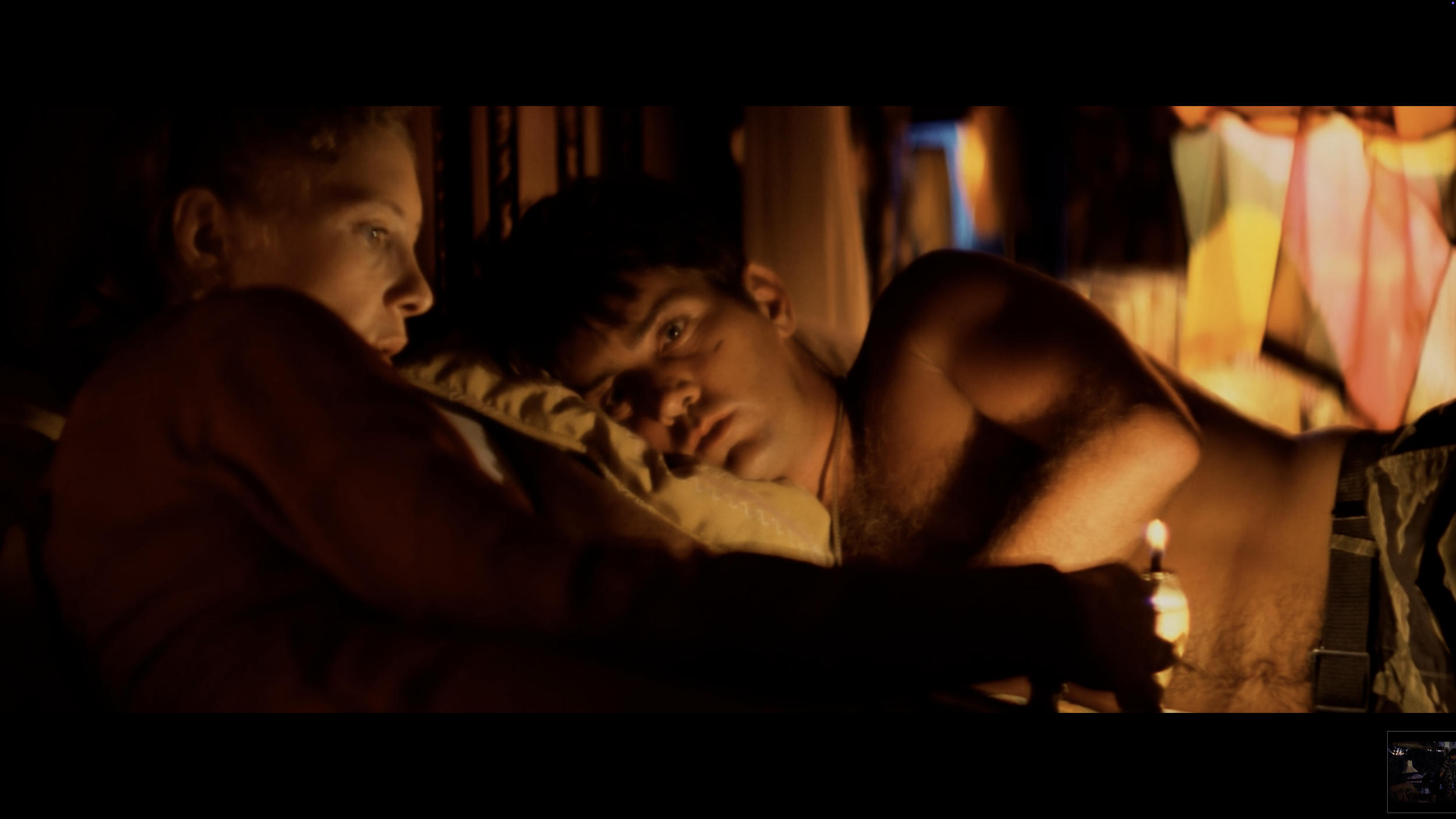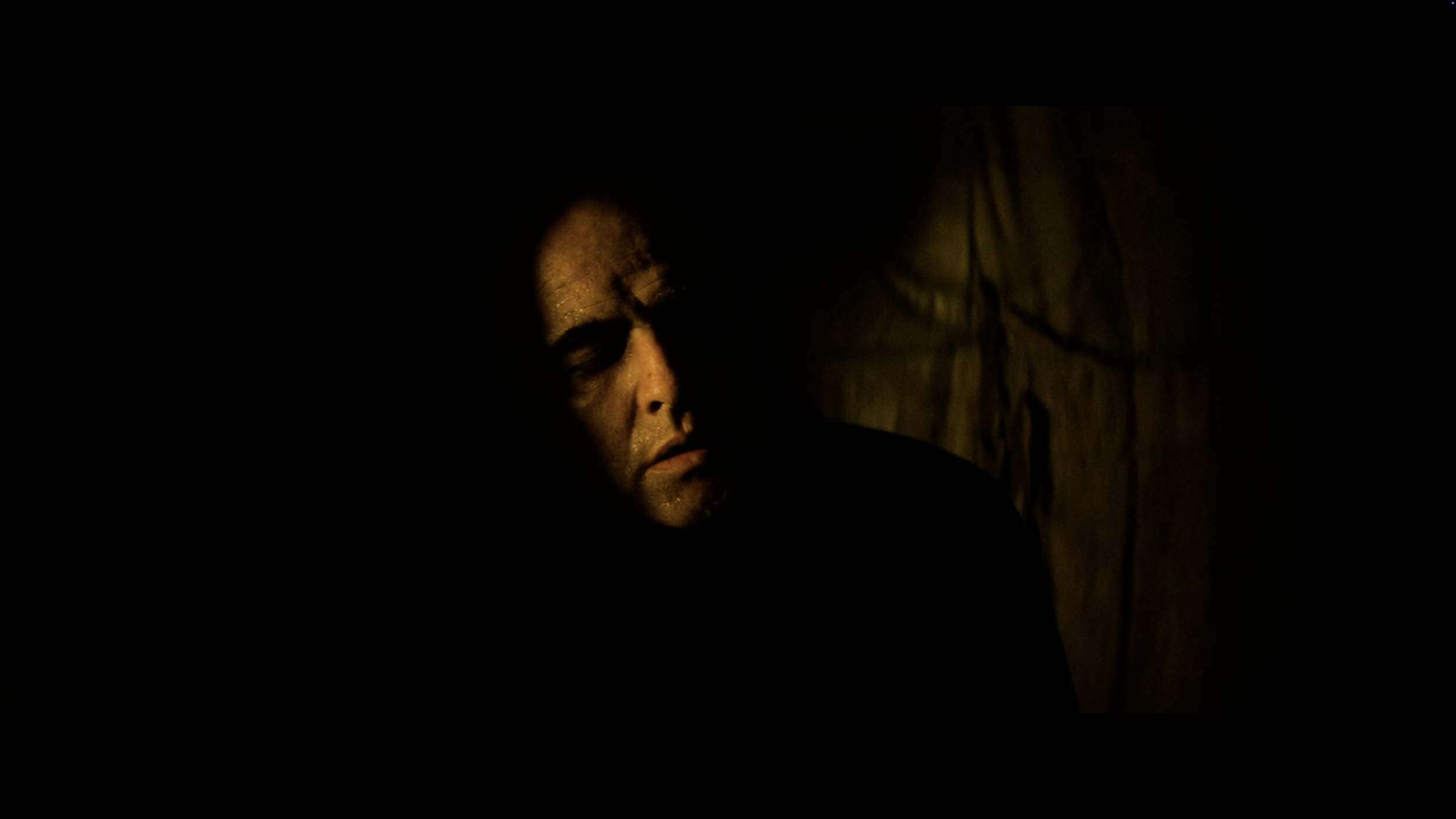Apocalypse Now: Final Cut (1979)
I revisit Francis Ford Coppola's "Apocalypse Now" every couple of years and upon each viewing I have to prepare myself mentally. It’s a visceral experience. A descent into the madness of the Vietnam War, and perhaps more profoundly, into the darkness that lurks within the human soul. I finally got a copy of the 4K Blu-Ray and with his "Final Cut," Coppola offers us the most complete and refined version of his vision, a film that continues to resonate with unsettling power.
From the very first frame, we are plunged into a sensory overload. The whirring of helicopter blades is a sound design masterstroke by Walter Murch. It isn't merely background noise, but a primal scream, both in Willard’s past but also a harbinger of the things to come. The image of a ceiling fan dissolving into the spinning blades of the chopper immediately establishes the film's central theme: the blurring of reality and nightmare. The heavy synth music score, with its otherworldly quality, further disorients us, suggesting that we are entering a realm beyond the familiar.
The infamous surfing sequence, often debated and sometimes derided, is in my view a brilliant encapsulation of the young men sent to die in our country. It's a metaphor for the absurdity of war, for the attempt to impose order and control on an inherently chaotic situation. Just as surfers seek the perfect wave, the soldiers seek a moment of exhilaration, a fleeting escape from the surrounding horror. The act of surfing, requiring skill, balance, and a willingness to risk it all, mirrors the soldier's plight. They are both riding a wave, a wave of adrenaline, of fear, of the unknown.
While this is undoubtedly a dark film, it is also laced with moments of black comedy. The gung-ho Lt. Colonel Kilgore, played with manic glee by Robert Duvall, is a prime example. His love of surfing, his casual disregard for human life ("I love the smell of napalm in the morning"), and his over the top pronouncements are both terrifying and hilarious. The Playboy Bunny scene, with its chaotic energy and desperate attempts at normalcy, is another instance of Coppola finding humor in the midst of madness. These moments of levity, however unsettling, serve to heighten the film's overall impact, reminding us that even in the darkest of times, the human spirit finds ways to cope, to laugh, and to survive.
Coppola intended "Apocalypse Now" to be, in part, a statement about American influence on the rest of the world. The film portrays America as a force of both destruction and paradoxically of a kind of twisted liberation. The American soldiers, with their advanced technology and weaponry, disrupt the natural order of things, leaving a trail of chaos in their wake.
In the years since the film's release, and particularly during the Trump presidency, America's role in the world has been subject to intense scrutiny. The rise of nationalism, the questioning of global alliances, and the increasing polarization of society have all raised questions about America's values and its place in the world. In the context of Trump's second term, the film's themes of unchecked power, abuse of authority, and the dangers of ideological extremism resonate with even greater force. The line, "You are American. You are fighting for the biggest nothing…" questions the very purpose of American interventionism.
Vittorio Storaro's cinemtography takes the film to another level. The film's use of the Technovision anamorphic lenses, allows for the widescreen aspect ratio that enhances both the sweeping vistas of the Vietnamese jungle and the claustrophobic intensity of the riverboat sequences. Storaro expertly uses this to create a sense of both epic scale and suffocating intimacy, mirroring Willard's psychological journey.
Consider also his use of light and shadow. Storaro sculpts with light, creating a chiaroscuro effect that heightens the film's sense of unease and moral ambiguity. The scenes in Kurtz's compound are particularly striking, with the heavy use of shadow suggesting the character's fractured psyche and the unsettling nature of his cult. This lighting technique was also a technical choice to address the problem of Marlon Brando being too overweight, but it just so happens to heighten the mythology of his character.
One of the most memorable sequences is the approach to the Do Lung Bridge. The bridge itself, a skeletal structure silhouetted against a fiery sky, becomes a symbol of the war's futility and the utter breakdown of order. Storaro's camera lingers on the faces of the soldiers, their expressions a mix of exhaustion, fear, and resignation. The lighting is harsh and unflattering, revealing the toll that the war has taken on their souls. The use of slow-motion during moments of intense violence, like the helicopter attack on the Viet Cong village, adds to the surreal and dreamlike quality of the film. These are carefully constructed visual metaphors that convey the psychological impact of war.
Walter Murch’s editing is what ties everything together, both with his physical cuts and sound design. The juxtaposition of the killing of the cow with the murder of Kurtz is a powerful statement about the duality of human nature. It suggests that beneath the veneer of civilization, we are all animals, capable of both great cruelty and great compassion. Kurtz, who has embraced his primal instincts, represents the ultimate expression of this duality. He is both a monster and a messiah, a figure of terror and a source of profound wisdom. The line, "There are two of you…one that kills, and one that loves," encapsulates this internal struggle, reminding us that the battle between good and evil is not just an external conflict, but a war waged within ourselves. Willard struggles with this moral ambiguity but ultimately stays the course.
"Apocalypse Now” is not an easy film to watch, or to study for that matter. It is challenging, disturbing, and deeply unsettling. But it is also a work of profound artistic merit, a film with so many layers that there’s something new to be found with each viewing. And although it’s a film about the terrors of the Vietnam War, it continues to be a relevant commentary on American influence and imperialism.











